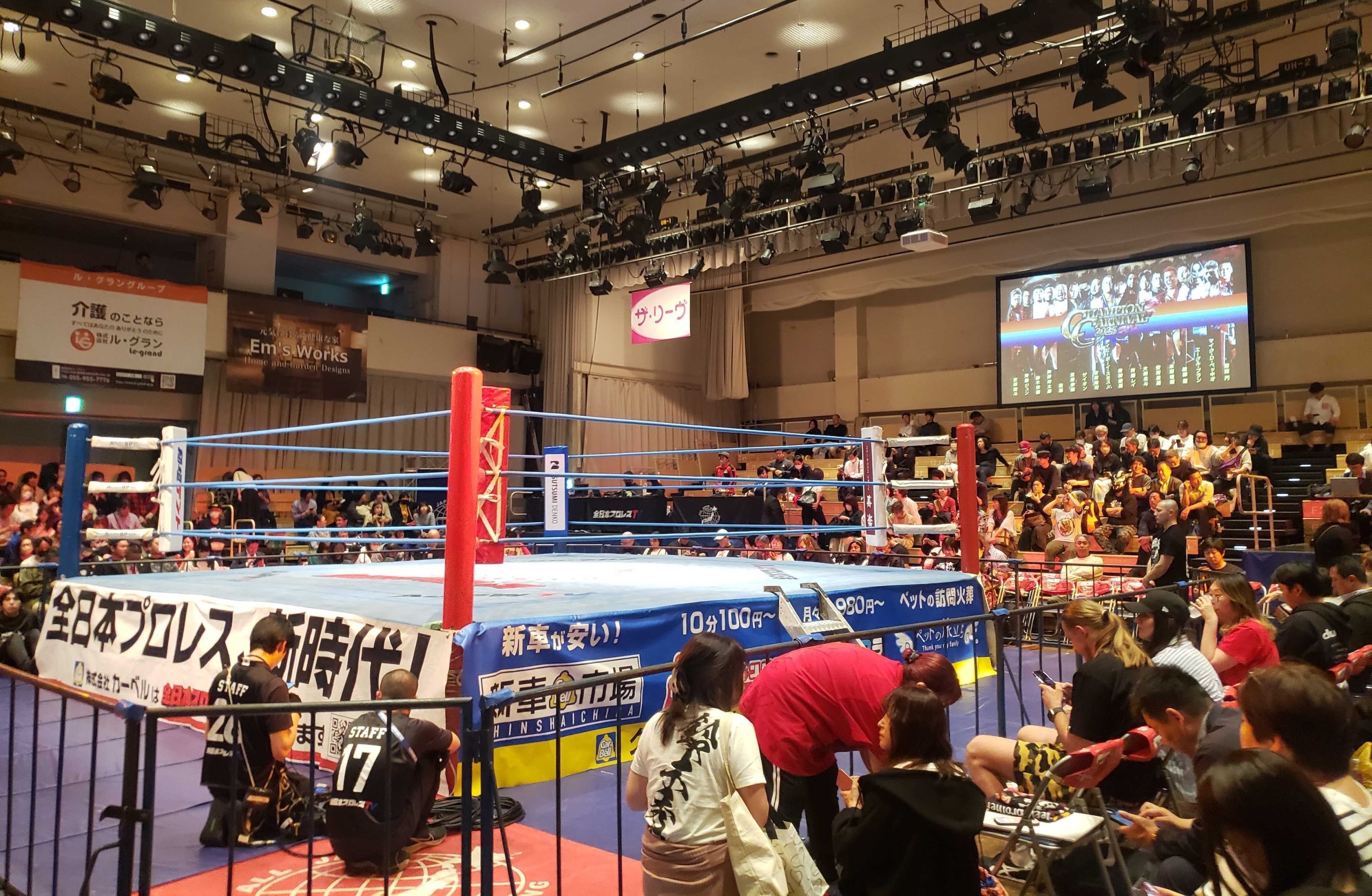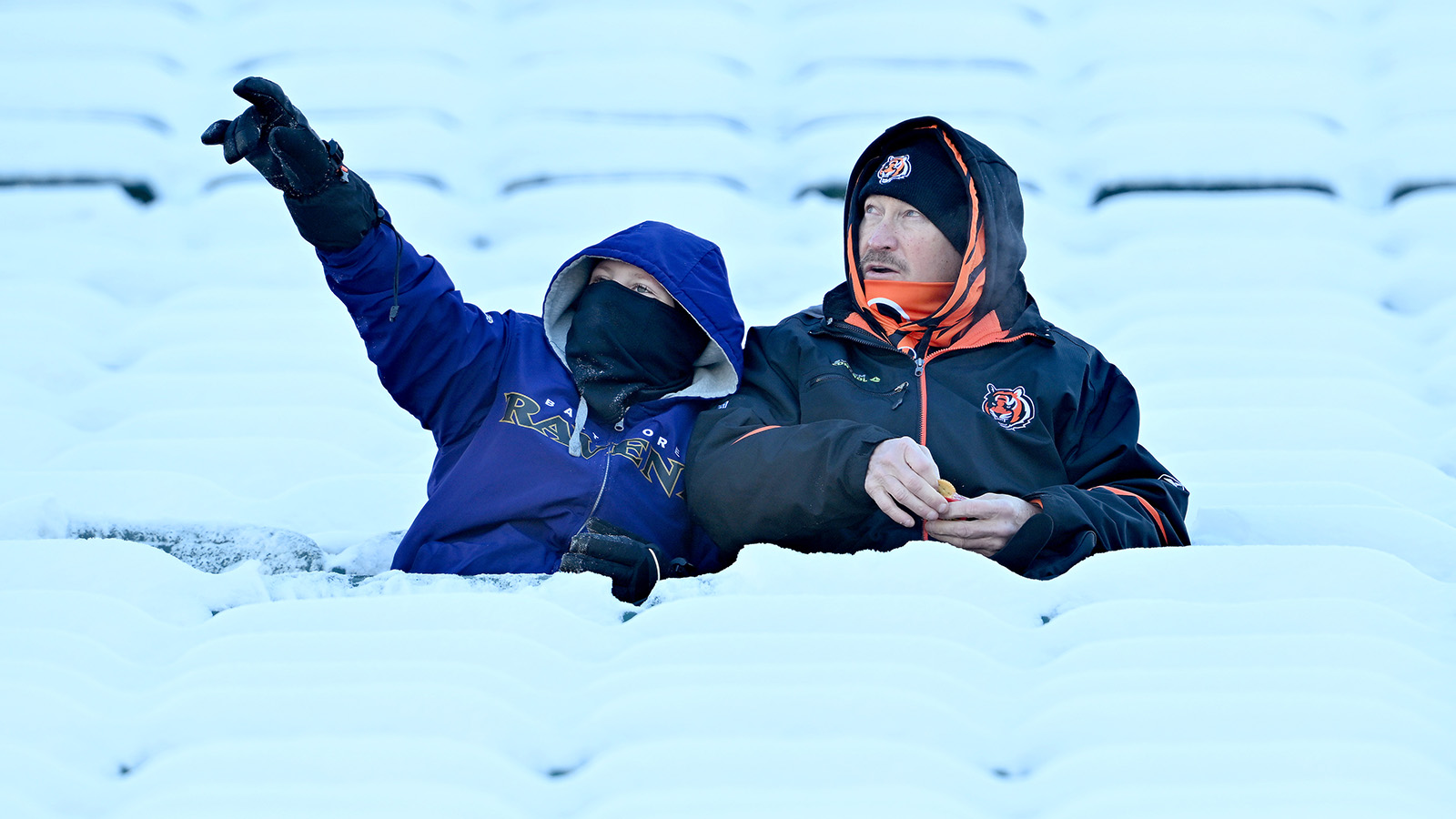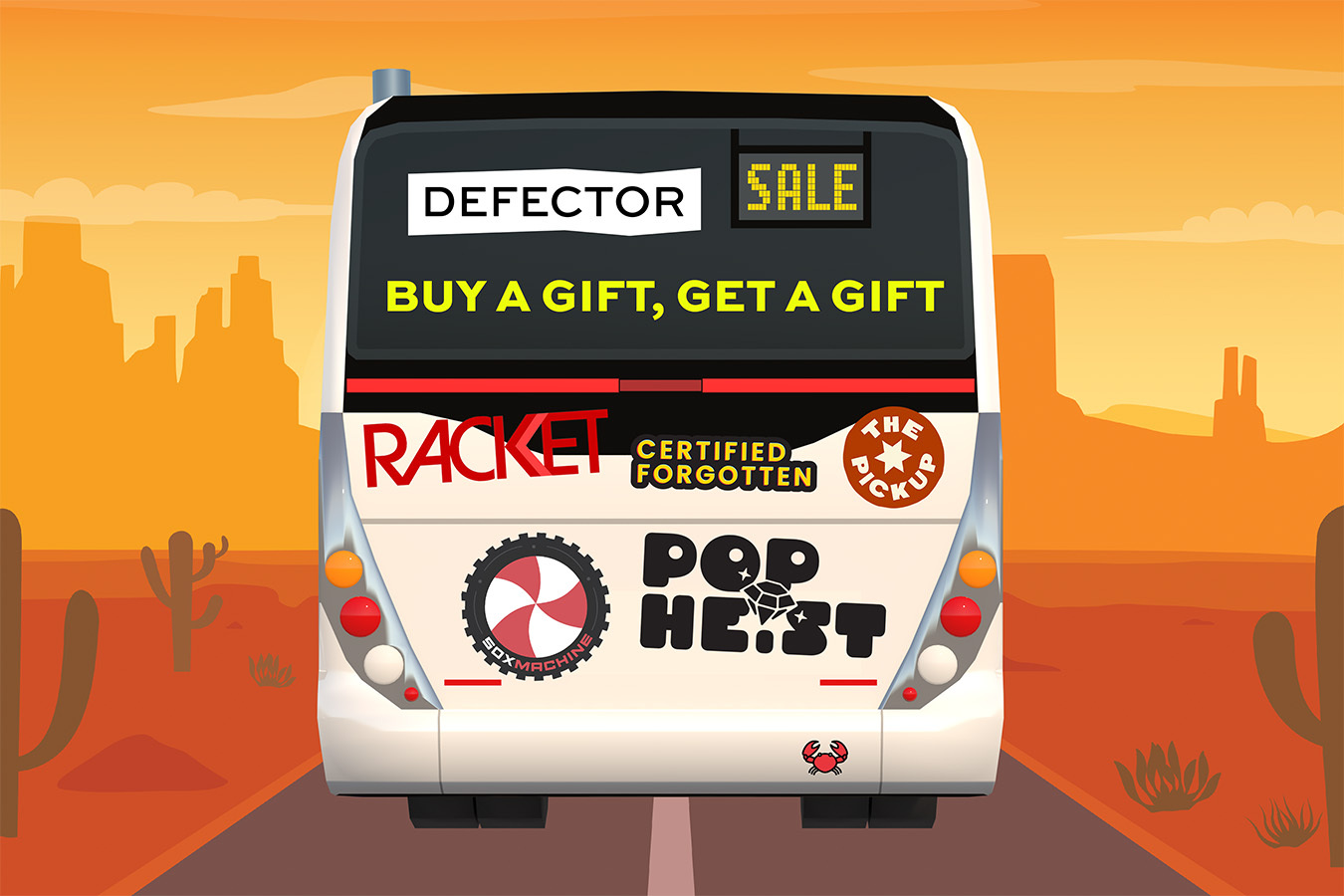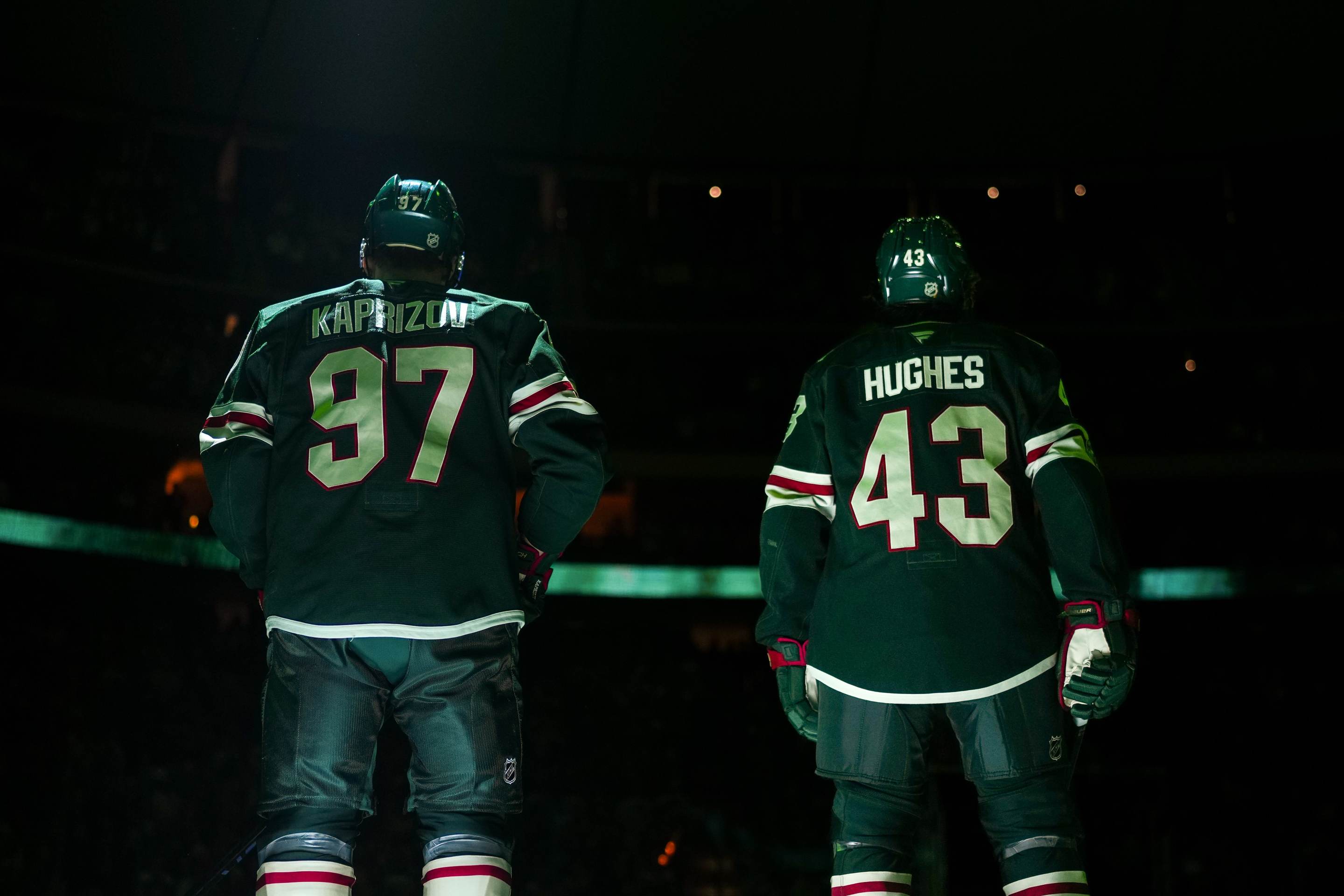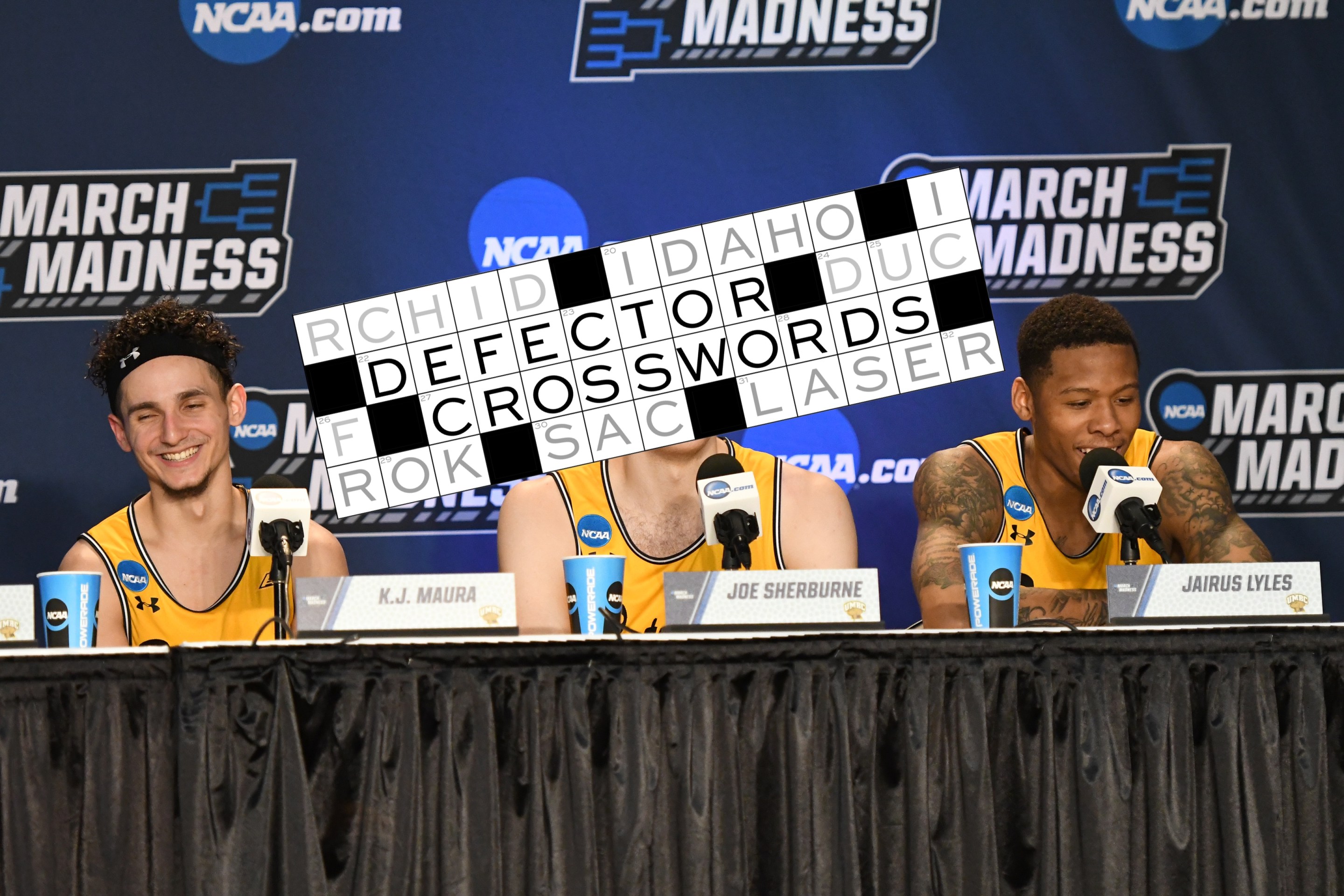TOKYO — Last year, when I visited Major League ballparks in Philadelphia and Minnesota for the first time, I made the same obvious-but-still-true observation: "It looks like it does on TV." Well, Korakuen Hall feels like it does on TV, or at least, on the Japanese wrestling streams I watch on my laptop: unadorned, practical, dignified. Arriving at Tokyo's wrestling epicenter last month, my brain still reeling from an international flight that had landed only the night earlier, I had a hard time distinguishing between my actual presence and the idea that I might be dreaming the whole thing. It was as if the setting had sprung out of two dimensions. The simple bleachers; the "East" and "West" signs, in kanji and English, on either end; the small balconies with banners hanging from them—I had seen it all before, kind of. I had never been within 5,000 miles of it, yet this was a room I knew intimately.
I went to Tokyo, basically, to see Korakuen Hall. I'm about to turn 30, and I have the normal feelings about that. Plus, I'd never traveled internationally except to Canada. I wanted to mark the big 3-0 and also see what it was like out there. So I did some big-time flying around the Pacific, the majority of it by myself, with a few specific destinations in mind. It was an amazing trip, one that affirmed my confidence in my resourcefulness and independence while also reminding me of my incredible luck. But I really think the crown jewel of it all—four cities in four different countries on three continents—was the pro wrestling. I went to three shows at Korakuen—plus one mini-adventure to the outlying wrestling shed Shin-Kiba 1st Ring to see an intimate show from the deathmatch promotion Freedoms—and this building that I had admired from so far away, miraculously, gave me exactly what I was hoping to find.
What was that, exactly? Well, first and foremost, top-notch wrestling from performers who never make the reciprocal journey out to New York City. On my first trip to Korakuen, I caught Night 1 of All Japan Pro Wrestling's Champion Carnival tournament—a shadow of what it used to be as a commercial venture but still a show that featured one of the greats of his era, Kento Miyahara. On the Sunday matinee, I went to OZ Academy's show and caught one of the very last matches in the career of Meiko Satomura, whose aura alone was worth the price of admission. And the next day, returning to my home-base ward after an excursion to Disneyland, I saw a Pro Wrestling NOAH event with a no-DQ tag match that included the dream team of Kenoh and Kenta. That main event gave me the most unforgettable moment of my whole trip, when Kenta and the charismatic rebel Ozawa brawled on the walkway directly behind my row and the heel spilled into what little space there was between me and my seat neighbor.
Ozawa & Tetsuya Endo vs Kenta & Kenoh, No DQ
— Lauren Theisen (@laurentheisen.bsky.social) 2025-04-14T12:41:34.006Z
Nearly every wrestler I saw was an IRL hello and goodbye—a performer I will only ever see again on a screen. That alone made it special. But the building made my hours with them transcendent.
Korakuen Hall is impossible to find unless you're specifically looking for it. Amid the food stalls and amusement rides in Tokyo Dome City, it sits on the fifth floor of what looks like a windowless office complex with a TGI Friday's at its base. My first visit came on the morning of the All Japan show, to buy tickets. (Japan is still big into paper tickets, and only the largest and most cosmopolitan baseball teams and cultural institutions sell them online in English.) I assumed I was in the wrong place at first, walked around aimlessly for a bit, and then resolved to look harder. When the correct elevator opened, I was greeted with steel roller shutters blocking the entrance. But a right turn brought me into what looked like a doctor's office reception area. I caught the eye of one of the few employees sitting behind a desk far beyond the bar separating customer from seller. I said, in extremely basic Japanese, "I want to buy a ticket." She approached me and used Google translate on her phone to ask me which events. I responded with days of the week (I knew those!) and promotion names. She presented me with laminated seating charts for each one, and I used my fluency in pointing at things to convey my picks. It was cash-only (she knew that phrase in English). I walked away with this envelope, very happy.

I go into the mundane details of this process to illustrate how unassuming Korakuen Hall is. This was not Madison Square Garden, or Lambeau Field, or the Tokyo Dome—venues that broadcast their own importance and streamline the process of spending your money there. It felt nothing like the most vital wrestling building in the country—the sale not much different than buying a ticket for a one-off indie show at a Knights of Columbus hall, the ceremony comparable to getting a power drill at your local hardware store.
Everything at Korakuen Hall feels almost accidental. The merch setup consists of a few tables you have to walk by on your way to the entrance. The historic memorabilia, inside some glass cases in what I guess is the lobby, is no more ostentatiously displayed than my old high school's. The concession stand, singular, sells fried snacks at gloriously low prices. The exit, if you don't take the elevator, is a small, old stairwell whose walls are covered in stickers. And inside the 1,600ish-capacity hall itself, a pull-down projection screen is the closest you get to a Jumbotron. The proper seats are narrow and the wood bleachers are just that and the room is hot and there's nothing about it at all that I would describe as "pretty." All of this works like a multiplier on Korakuen's charm. Not including boxing, which it also hosts, I count 13 different wrestling companies that put on at least one show there in the month of April alone. For smaller promotions, this place is the pinnacle. For the biggest ones, it's still a sentimental old haunt. It may not look like any more than a lecture hall, but it's the sun around which the entire Japanese scene revolves.
And oh my god, the wrestling.
It really does feel different at Korakuen, compared to America but also even to Shin-Kiba 1st Ring. In Japan generally, cheering is totally different. The atmosphere is less like a tailgate, with everyone staying seated the entire time, and you don't get "clever" chants like in North America and Europe. You chant the wrestler's name, basically, and that's it. But also, whenever a fan feels compelled to do so, she just shouts the name of the wrestler she's supporting, without rhythm or timing. It almost feels like a Quaker ethos—speak only when the spirit moves you. Imagine a baseball game where, say, Shohei Ohtani is facing Tarik Skubal. Dodger Stadium is quiet, except some fans shout "Shohei!" whenever they feel like he needs their support, and other fans shout "Skubal!" I'm not saying every crowd has to be like that, but there's gravitas in a silence cut only by genuine emotional expression.
And as the intensity of the match increases, of course, the crowd gets more and more audible, adding "oooh" and "ahhs" of increasing volume to the soundtrack. This is not groundbreaking stuff, but what did impress was that it made me feel like I had a sixth sense for when a match was about to end. The audience there is so smart, and so engaged, that their reactions, echoing off the walls of that no-frills room, almost seem to dictate the pace of the match, rather than the other way around. Every near-fall was just a little bit more intense than the one before, until I thought to myself something like This is the peak, and then, sure enough, one of the fighters planted their flag on the mountaintop.
I haven't watched a Korakuen show since returning home, because I'm still catching up on all the indie events that piggybacked off WrestleMania weekend. But just looking at clips from the matches I attended while I was there, I already know it will feel different. The walls of Korakuen Hall are no longer a foreign background that seems to sit an unreachably long distance from my apartment. It's a place I've seen and touched and shouted in, a place that now holds my memories with those of the millions that came before me, and the many more still to come.
